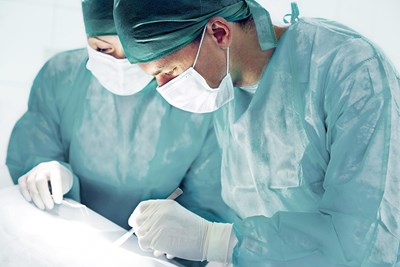Laparoscopic surgery is a minimally invasive form of surgery that leaves less scarring and decreases the risks of infection. By making a small incision, the surgeon is able to insert the laparoscope, a long thin tube with a camera and light on the end, and view what’s going on internally on a connected monitor. This makes a great deal of surgeries and diagnostic procedures a bit easier—although they can be more time consuming—and while that’s nice for doctors, it also means recovery is easier too. And that’s nice for you.
Immediately Following Surgery
As with any surgery, the specific type of surgery in question will have much to do with how quickly healing and recovery can begin and end. General anesthesia is typically still used, which means you’ll still be pretty woozy upon waking, and you can expect at least a few hours in recovery at the hospital. Once the healthcare staff is satisfied with your vital signs, there’s no indication of a bad reaction to the anesthesia, and you have completely woken up from the anesthesia, you’ll be discharged—if the laparoscopic surgery was an outpatient procedure, many of which are. If it wasn’t, an overnight stay may be necessary. Regardless, you should plan to have someone prepared to drive you home.
Recovering at Home
In single-site procedures, only one incision is made. However, some procedures require multiple tools and multiple incisions. Regardless, you can expect some pain and discomfort. Although laparscopies take the place of open surgeries in which the abdomen is opened with a much longer incision, there are still incisions involved and surgery is still performed, even if you get to go home the same day.
Additionally, there may be some shoulder pain; during some procedures the abdomen is filled with gas to increase clarity. This gas can cause a reaction with the diaphragm as well as bloating. Talk to your doctor so you know exactly what is in store for you and your recovery, but in many cases, life can return to normal after about a week of taking it easy.
What to Look Out For
While some pain is to be expected, there shouldn’t be an inordinate amount. All surgeries carry risks, and one of the more serious risks of laparscopic surgery is causing damage to an organ near the site of the actual surgery. If you find yourself with severe abdominal pain, vomiting or nausea, a fever, a cough, or are feeling weak or having difficulty breathing, contact your doctor. Keep an eye on the places where the incision or incisions were made, and report any changes in these (other than the expected healing). Redness, inflammation, excessive soreness, oozing, or bleeding can all be indicative of infection and should be managed as quickly as possible. Talk about any potential concerns you may have with your doctor before undergoing surgery, and be prepared to make appropriate alterations to your lifestyle for the requisite days according to your doctor’s suggestions.



